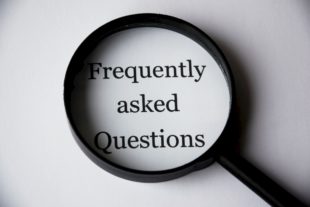What is ADHD? Signs and Symptoms
Christian Counselor Spokane
One of my favorite things to do is to demystify misunderstood and misinterpreted mental health diagnoses. If you’ve ever wondered, “What is ADHD?” this article is for you. Below I have gathered information from the National Institute of Mental Health and Diagnostic and Statistical Manual of Mental Disorders to present the facts on ADHD, or Attention Deficit Hyperactivity Disorder.
 Nothing implicit or storytelling about the way the disorder appears, presents, or functions; just the black and whites of the in’s and out’s. I hope that this can be a stepping stone to finding the answers you are searching for, and maybe, the first of many steps towards a direction of understanding.
Nothing implicit or storytelling about the way the disorder appears, presents, or functions; just the black and whites of the in’s and out’s. I hope that this can be a stepping stone to finding the answers you are searching for, and maybe, the first of many steps towards a direction of understanding.
Attention-Deficit/Hyperactivity Disorder (ADHD) is a disorder marked by an ongoing pattern of inattention and/or hyperactivity/impulsivity that interferes with functioning or development.
Inattention means a person wanders off task, lacks persistence, has difficulty sustaining focus, and is disorganized; and these problems are not due to defiance or lack of comprehension.
Hyperactivity means a person seems to move about constantly, including in situations in which it is not appropriate; or excessively fidgets, taps, or talks. In adults, it may be extreme restlessness or wearing others out with constant activity.
Impulsivity means a person performs hasty actions that occur in the moment without first thinking about them and that may have a high potential for harm, or a desire for immediate rewards, or an inability to delay gratification. An impulsive person may be socially intrusive and excessively interrupt others or make important decisions without considering the long-term consequences.
Signs and Symptoms
Inattention and hyperactivity/impulsivity are the key behaviors of ADHD. Some people with ADHD only have problems with one of the behaviors, while others have both inattention and hyperactivity-impulsivity. Most children have the combined type of ADHD.
In preschool, the most common ADHD symptom is hyperactivity.
It is normal to have some inattention, unfocused motor activity, and impulsivity, but for people with ADHD, these behaviors:
- are more severe
- occur more often
- interfere with or reduce the quality of how they function socially, at school, or in a job
Inattention
People with symptoms of inattention may often:
 Overlook or miss details, make careless mistakes in schoolwork, at work, or during other activities
Overlook or miss details, make careless mistakes in schoolwork, at work, or during other activities- Have problems sustaining attention in tasks or play, including conversations, lectures, or lengthy reading
- Not seem to listen when spoken to directly
- Not follow through on instructions and fail to finish schoolwork, chores, or duties in the workplace or start tasks but quickly lose focus and get easily sidetracked
- Have problems organizing tasks and activities, such as what to do in sequence, keeping materials and belongings in order, having messy work and poor time management, and failing to meet deadlines
- Avoid or dislike tasks that require sustained mental effort, such as schoolwork or homework, or for teens and older adults, preparing reports, completing forms, or reviewing lengthy papers
- Lose things necessary for tasks or activities, such as school supplies, pencils, books, tools, wallets, keys, paperwork, eyeglasses, and cell phones
- Be easily distracted by unrelated thoughts or stimuli
- Be forgetful in daily activities, such as chores, errands, returning calls, and keeping appointments
Hyperactivity-Impulsivity
People with symptoms of hyperactivity-impulsivity may often:
- Fidget and squirm in their seats
- Leave their seats in situations when staying seated is expected, such as in the classroom or the office
- Run or dash around or climb in situations where it is inappropriate or, in teens and adults, often feel restless
- Be unable to play or engage in hobbies quietly
- Be constantly in motion or “on the go,” or act as if “driven by a motor”
- Talk nonstop
- Blurt out an answer before a question has been completed, finish other people’s sentences, or speak without waiting for a turn in a conversation
- Have trouble waiting for his or her turn
- Interrupt or intrude on others, for example in conversations, games, or activities
Diagnosis of ADHD requires a comprehensive evaluation by a licensed clinician, such as a pediatrician, psychologist, or psychiatrist with expertise in ADHD. For a person to receive a diagnosis of ADHD, the symptoms of inattention and/or hyperactivity-impulsivity must be chronic or long-lasting, impair the person’s functioning, and cause the person to fall behind typical development for his or her age.
 The doctor will also ensure that any ADHD symptoms are not due to another medical or psychiatric condition. Most children with ADHD receive a diagnosis during the elementary school years. For an adolescent or adult to receive a diagnosis of ADHD, the symptoms need to have been present before age 12.
The doctor will also ensure that any ADHD symptoms are not due to another medical or psychiatric condition. Most children with ADHD receive a diagnosis during the elementary school years. For an adolescent or adult to receive a diagnosis of ADHD, the symptoms need to have been present before age 12.
ADHD symptoms can appear as early as between the ages of 3 and 6 and can continue through adolescence and adulthood. Symptoms of ADHD can be mistaken for emotional or disciplinary problems or missed entirely in quiet, well-behaved children, leading to a delay in diagnosis. Adults with undiagnosed ADHD may have a history of poor academic performance, problems at work, or difficult or failed relationships.
ADHD symptoms can change over time as a person ages. In young children with ADHD, hyperactivity-impulsivity is the most predominant symptom. As a child reaches elementary school, the symptom of inattention may become more prominent and cause the child to struggle academically.
In adolescence, hyperactivity seems to lessen and may show more often as feelings of restlessness or fidgeting, but inattention and impulsivity may remain. Many adolescents with ADHD also struggle with relationships and antisocial behaviors. Inattention, restlessness, and impulsivity tend to persist into adulthood.
Because I am a firm believer in transparency, I have listed the criteria below for you to evaluate and assess. It is not the job of the parent to diagnose the child or for someone to diagnose themselves, but it is your job to advocate for yourself and your loved ones. These criteria can be a starting point.
DSM-5 Criteria for ADHD
People with ADHD show a persistent pattern of inattention and/or hyperactivity/impulsivity that interferes with functioning or development:
Inattention: Six or more symptoms of inattention for children up to age 16 years, or five or more for adolescents age 17 years and older and adults; symptoms of inattention have been present for at least 6 months, and they are inappropriate for developmental level:
- Often fails to give close attention to details or makes careless mistakes in schoolwork, at work, or with other activities.
- Often has trouble holding attention on tasks or play activities.
- Often does not seem to listen when spoken to directly.
- Often does not follow through on instructions and fails to finish schoolwork, chores, or duties in the workplace (e.g., loses focus, side-tracked).
- Often has trouble organizing tasks and activities.
- Often avoids, dislikes, or is reluctant to do tasks that require mental effort over a long period (such as schoolwork or homework).
- Often loses things necessary for tasks and activities (e.g. school materials, pencils, books, tools, wallets, keys, paperwork, eyeglasses, mobile telephones).
 Is often easily distracted
Is often easily distracted- Is often forgetful in daily activities.
Hyperactivity and Impulsivity: Six or more symptoms of hyperactivity-impulsivity for children up to age 16 years, or five or more for adolescents age 17 years and older and adults; symptoms of hyperactivity-impulsivity have been present for at least 6 months to an extent that is disruptive and inappropriate for the person’s developmental level:
- Often fidgets with or taps hands or feet, or squirms in seat.
- Often leaves seat in situations when remaining seated is expected.
- Often runs about or climbs in situations where it is not appropriate (adolescents or adults may be limited to feeling restless).
- Often unable to play or take part in leisure activities quietly.
- Is often “on the go” acting as if “driven by a motor”.
- Often talks excessively.
- Often blurts out an answer before a question has been completed.
- Often has trouble waiting their turn.
- Often interrupts or intrudes on others (e.g., butts into conversations or games)
In addition, the following conditions must be met:
- Several inattentive or hyperactive-impulsive symptoms were present before age 12 years.
- Several symptoms are present in two or more settings, (such as at home, school or work; with friends or relatives; in other activities).
- There is clear evidence that the symptoms interfere with, or reduce the quality of, social, school, or work functioning.
- The symptoms are not better explained by another mental disorder (such as a mood disorder, anxiety disorder, dissociative disorder, or a personality disorder). The symptoms do not happen only during schizophrenia or another psychotic disorder.
Based on the types of symptoms, three kinds (presentations) of ADHD can occur:
- Combined Presentation: if enough symptoms of both criteria inattention and hyperactivity-impulsivity were present for the past 6 months
- Predominantly Inattentive Presentation: if enough symptoms of inattention, but not hyperactivity-impulsivity, were present for the past six months
- Predominantly Hyperactive-Impulsive Presentation: if enough symptoms of hyperactivity-impulsivity, but not inattention, were present for the past six months.
National Institute of Mental Health. (2019, October). Attention-Deficit/Hyperactivity Disorder. National Institute of Mental Health (NIMH). https://www.nimh.nih.gov/health/topics/attention-deficit-hyperactivity-disorder-adhd/index.shtml
“FAQ”, Courtesy of Pixabay, Pexels.com, CC0 License; “Yellow Arrows”, Courtesy of Isaque Pereira, Pexels.com, CC0 License; “Plastic Animals”, Courtesy of Magda Ehlers, Pexels.com, CC0 License; “Checklist”, Courtesy of Pixabay, Pexels.com, CC0 License





